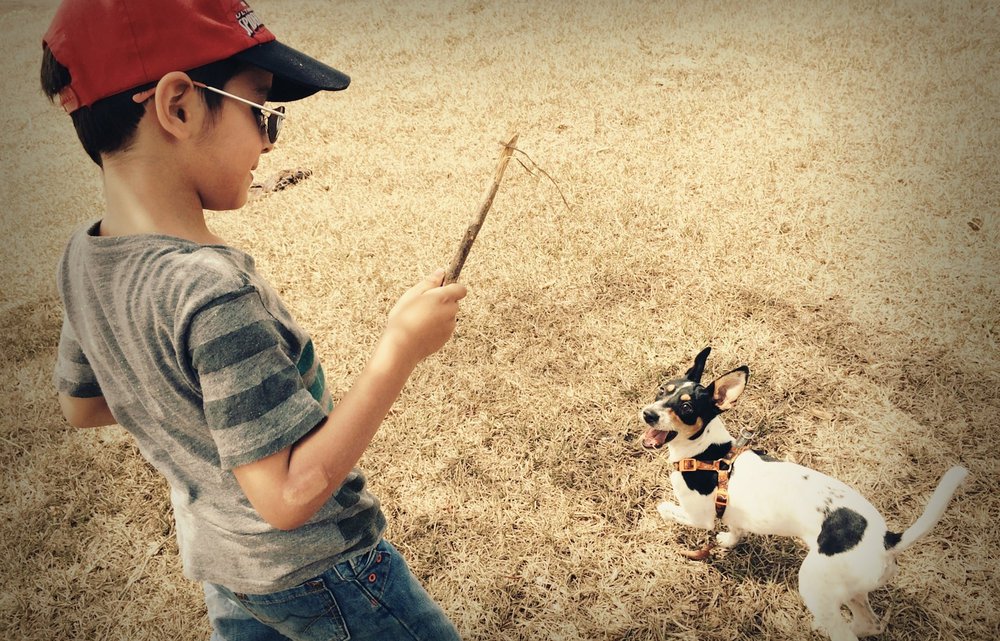Helping a child learn in a classroom is a task both teachers and administrators spend a great deal of time mastering. Sometimes it takes something out of the ordinary, but very much part of our lives, to kindle a child's desire to learn. For this reason, certain schools have encouraged furry four-legged visitors as a positive teaching method. More and more, man’s best friend is being acknowledged as having a positive influence in classrooms around the country.
One school near Boston took up the idea of bringing in a Labrador puppy: Saint George’s Preparatory School hired a 10-week-old puppy named Bean after a student submitted a letter defining the benefits. Headteacher Sarah Whelan told Lincolnshire Live, “Bean will provide comfort for pupils who feel sad, lonely and worried. She is non-judgmental and will listen to children who may be reluctant to read aloud to adults. She will be taken for walks at lunchtime and will join children at Forest School. We are embarking on exciting times. Bean doesn’t yet realize what an important member of the staff she is.”
Similarly, Conservatory Prep Schools, a small high school in South Florida, started a program last year through their National Honor Society called “Bring Your Dog to School.” The students sign up so only one dog is in a class at a time. “Many of our students have anxiety and/or feel overwhelmed when a paper or project is due,” says school’s principal Dr. Wendy Hirsch Weiner. “We have found that the dogs wander from one student to the next in the classroom seeming to know who needed their attention most. The students report that they feel much calmer when the dog is near them and are actually more productive with their work.”
A long-serving administrator and math teacher at Shaker Heights University School, Ohio, Vin Fiordalis, is a strong advocate of dogs in the classroom. He wrote a recollection of the value of having a dog in his own classroom and praises dogs as genuine “teachers’ pets” and working with dogs as a creative teaching method.
He brought his own dog Misty, a Golden Retriever, to class every day. “Nothing seemed to calm down a distressed sixth grader as well as a session with Misty,” recollected Fiordalis. “Many temporarily troubled preadolescents found quick and complete relief after visiting Misty and sharing some time together.”
After a busy recess, I often came into the room, only to find a gaggle of twelve-year-old children huddled around her on the floor reading. She was a very special member of our classes and the overall school community.”
Sally Morgan a former teacher and author of Dances of The Heart: Connecting with Animals, taught school for 15 years and often had her Corgi in the classroom.
Now a holistic physical therapist for pets and people. She describes how dogs impart many health benefits to humans. “They lower heart rates, blood pressure, and decrease stress levels. They help shy people find a voice. Dogs have been shown to help with pro-social behavior in the classroom by getting kids to be more cooperative.”
A study from the University of California-Davis School of Veterinary Medicine found that children reading aloud to a dog became better readers. The school ran two studies that consisted of children in a typical school environment and children who are homeschooled.
The university’s publication reported that in both studies, the children read regularly to three shelter-rescued dogs, Lollipop, Molly and Digory, provided by the Animal Rescue Foundation. The first study with third-grade students at a nearby school read out loud to their furry friends for 10 minutes, once a week, for 10 weeks. Their reading fluency improved by 12 percent. The second study focused on homeschooled students. They visited the Davis campus weekly with their parents for 10 weeks. They read aloud to one of the dogs for 15 to 20 minutes. The students reading fluency improved by 30 percent.
“I feel relaxed when I am reading to a dog because I am having fun,” one child told researchers. “The dogs don’t care if you read really, really bad so you just keep going,” said another.
A majority of the parents reported their children read aloud more frequently and with greater confidence after the study was completed. The researchers surmise that the patient, nonjudgmental attention that the dogs offer is fundamental to bringing about the changes in the kids’ attitudes toward reading. As the subject of SEL (Social-Emotional Learning) receives more and more attention these days, this simple four-legged solution may be just the ticket many kids need.
Sources:
Vin Fiordalis: http://www.creativeteachingsite.com/dogs/dogs.html
Lincolnshire Live: http://www.lincolnshirelive.co.uk/news/local-news/school-employs-new-staff-member-759334
Dr. Wendy Hirsch Weiner, principal: Www.conservatoryprep.org
Sally Morgan - "Dances of the Heart - Connecting with Animals"











